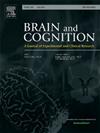One hour walk improves inhibitory control and increases prefrontal cortex activation
IF 1.4
3区 心理学
Q3 NEUROSCIENCES
引用次数: 0
Abstract
Regular physical activity is deemed beneficial to physical, cognitive, and emotional health. Walking may be an accessible means of meeting physical activity recommendations and improving cognition. However, exercise effects on cognition are often explored at shorter durations (30 min or less), with fewer studies exploring how cognition is impacted during longer bouts of exercise. 36 (7 women) civilians and active-duty soldiers completed a VO2 max test and two one-hour walks, one at and one below the ventilatory threshold (VT), on separate days. They completed the Go/No-Go and Task-Switching Tasks before, every 15 min during, and immediately after exercise, while wearing a near-infrared spectroscopy (NIRS) system to monitor prefrontal cortex (PFC) activity. Response speed during the Go/No-Go task was improved at VT compared to sub-VT at the expense of task accuracy. FP cortex was deactivated during exercise in the Task-Switching Task, potentially due to the increased competition for resources between the frontal cortex and movement related areas. As a result, exercise at or below VT may improve or impair cognitive performance and activation in executive function-related areas depending on the task type and exercise intensity level.
一小时的步行能改善抑制控制,增加前额叶皮层的激活。
有规律的体育锻炼被认为有益于身体、认知和情绪健康。步行可能是一种既能满足体育锻炼建议又能改善认知能力的便捷方式。然而,运动对认知能力的影响通常是在较短的时间内(30 分钟或更短)进行的,很少有研究探讨在较长时间的运动中认知能力会受到怎样的影响。36 名平民和现役士兵(7 名女性)分别在不同的日子里完成了最大容氧量测试和两次一小时的步行,一次在通气阈值(VT)以下,一次在通气阈值以上。他们在运动前、运动中每隔 15 分钟和运动后立即完成了 Go/No-Go 和任务切换任务,同时佩戴了近红外光谱(NIRS)系统来监测前额叶皮层(PFC)的活动。与亚 VT 相比,VT 阶段的 Go/No-Go 任务响应速度有所提高,但任务准确性有所下降。在任务切换任务中,前额叶皮质在运动时失活,这可能是由于前额叶皮质与运动相关区域之间的资源竞争加剧所致。因此,根据任务类型和运动强度的不同,在VT或VT以下运动可能会改善或损害认知表现和执行功能相关区域的激活。
本文章由计算机程序翻译,如有差异,请以英文原文为准。
求助全文
约1分钟内获得全文
求助全文
来源期刊

Brain and Cognition
医学-神经科学
CiteScore
4.60
自引率
0.00%
发文量
46
审稿时长
6 months
期刊介绍:
Brain and Cognition is a forum for the integration of the neurosciences and cognitive sciences. B&C publishes peer-reviewed research articles, theoretical papers, case histories that address important theoretical issues, and historical articles into the interaction between cognitive function and brain processes. The focus is on rigorous studies of an empirical or theoretical nature and which make an original contribution to our knowledge about the involvement of the nervous system in cognition. Coverage includes, but is not limited to memory, learning, emotion, perception, movement, music or praxis in relationship to brain structure or function. Published articles will typically address issues relating some aspect of cognitive function to its neurological substrates with clear theoretical import, formulating new hypotheses or refuting previously established hypotheses. Clinical papers are welcome if they raise issues of theoretical importance or concern and shed light on the interaction between brain function and cognitive function. We welcome review articles that clearly contribute a new perspective or integration, beyond summarizing the literature in the field; authors of review articles should make explicit where the contribution lies. We also welcome proposals for special issues on aspects of the relation between cognition and the structure and function of the nervous system. Such proposals can be made directly to the Editor-in-Chief from individuals interested in being guest editors for such collections.
 求助内容:
求助内容: 应助结果提醒方式:
应助结果提醒方式:


